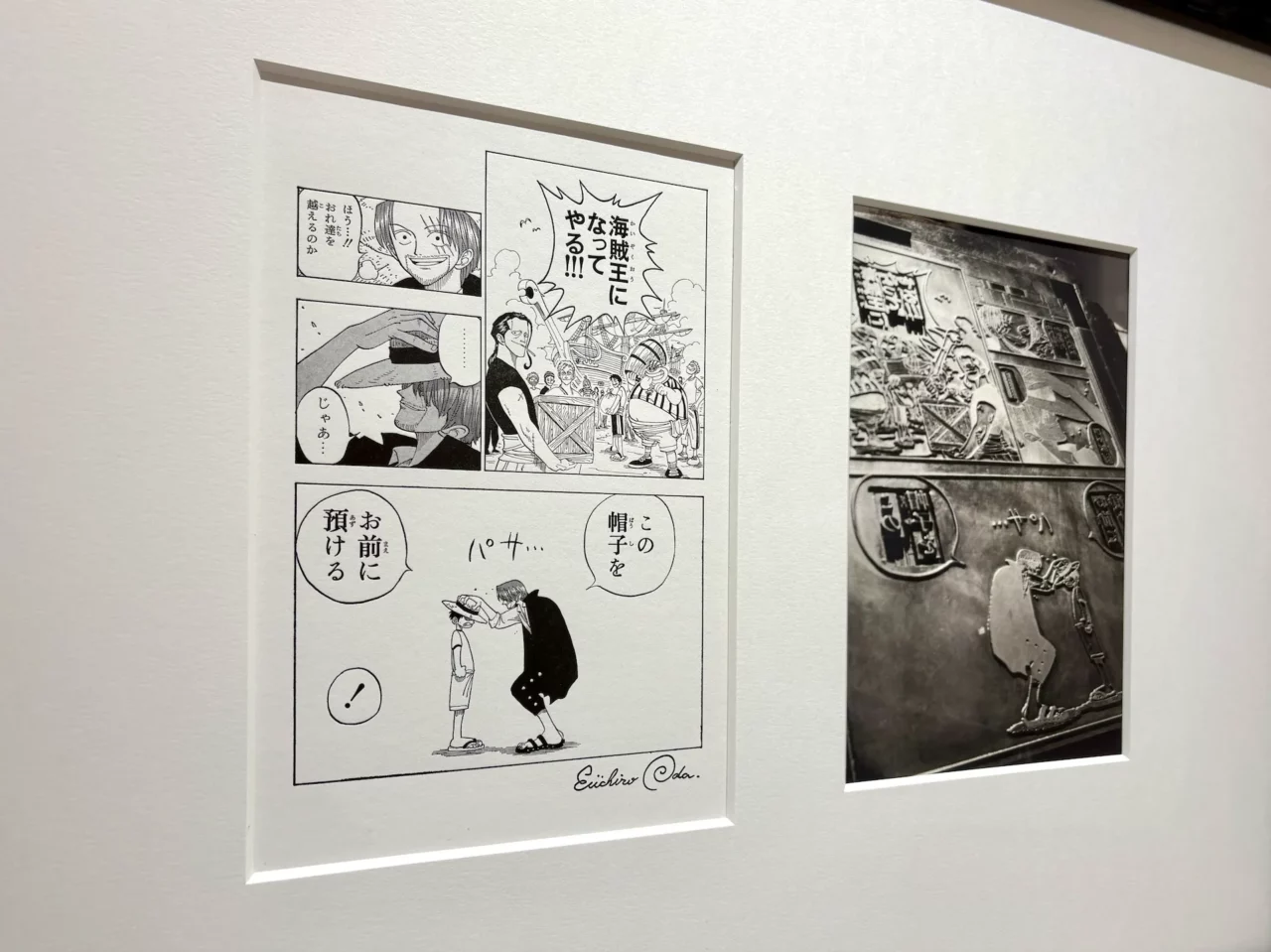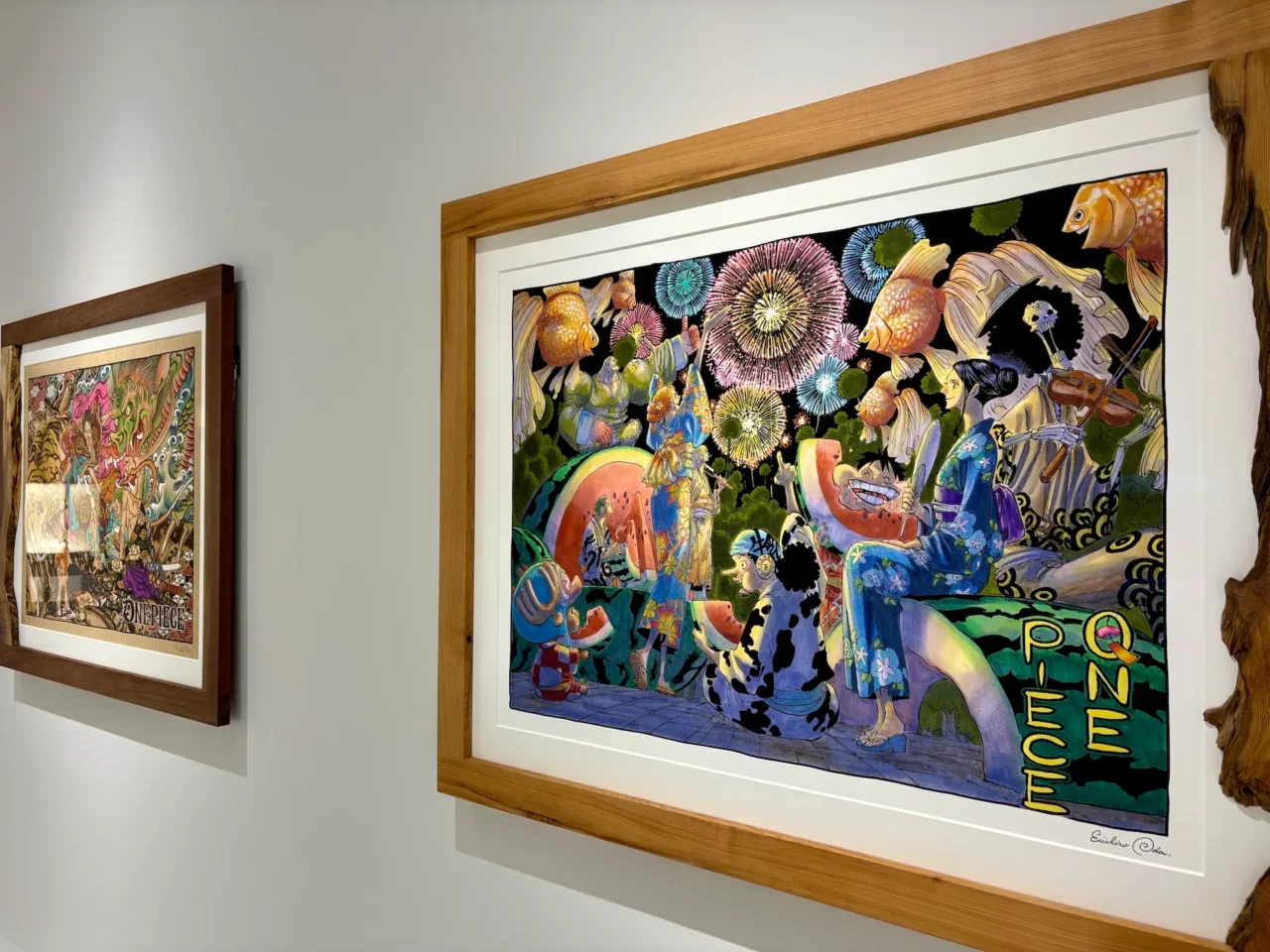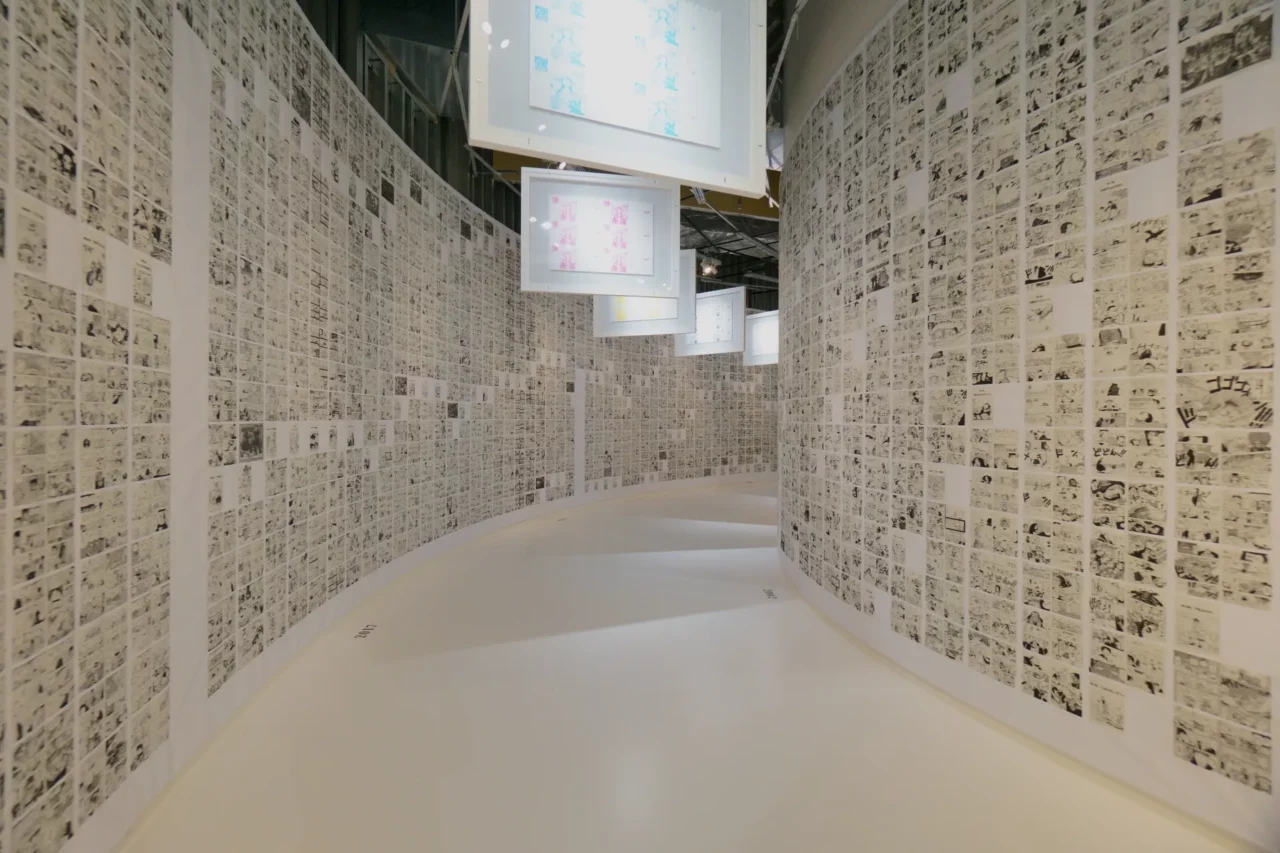INDEX
Transforming Manga into Art with Full-Force Printing

On the other hand, there are also unfamiliar printing methods. The exhibition is curated by “Shueisha Manga Art Heritage,” a project by Shueisha dedicated to preserving manga as an art form for future generations. As part of this initiative, they create and sell “manga prints” produced with high-quality materials and craftsmanship through a website and galleries. The photo shows a special print made using traditional letterpress printing with a metal plate. The faint indentations left by the plate add significant depth and enhance the impact of the scene. It made me realize that the word “impression” in “impressionistic” originally referred to “pressing to leave a shape or color.”
By the way, according to the official website of this project, the size of manga original drawings (B4) is almost the same as that of ukiyo-e (Mino edition). I suddenly realized that the boundary I had assumed between manga and art became almost invisible after reading that sentence.

Similarly, a range of ultra-high-quality color works are on display, offering a visual delight. The vivid colors are so striking that they could easily be mistaken for original artwork.

Following “The Wall,” you proceed further into the exhibition, where suspended from the ceiling are the seven color plates used to print the cover of One Piece‘s 100th volume. Typically, Jump Comics covers are printed with five colors—cyan, magenta, yellow, black, and fluorescent pink. However, to capture the colors of this milestone 100th volume, two additional colors, fluorescent blue and fluorescent yellow, were added, making it a seven-color process to fully realize the vibrancy of the original artwork. Seen this way, the multicolor printing has an almost ukiyo-e quality to it—an intriguing parallel.
























